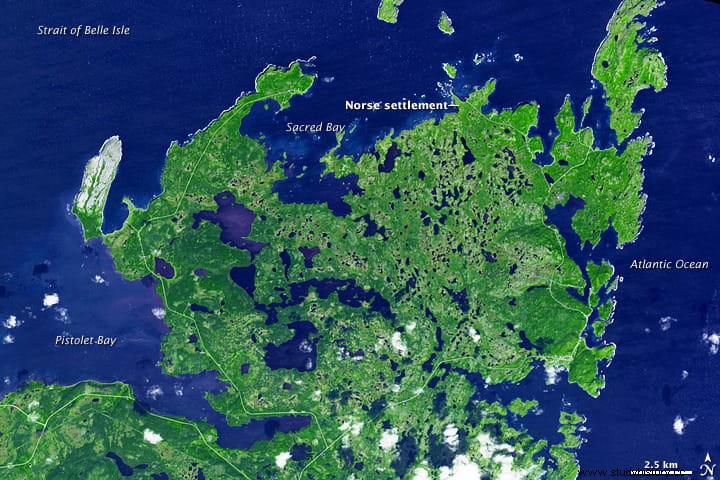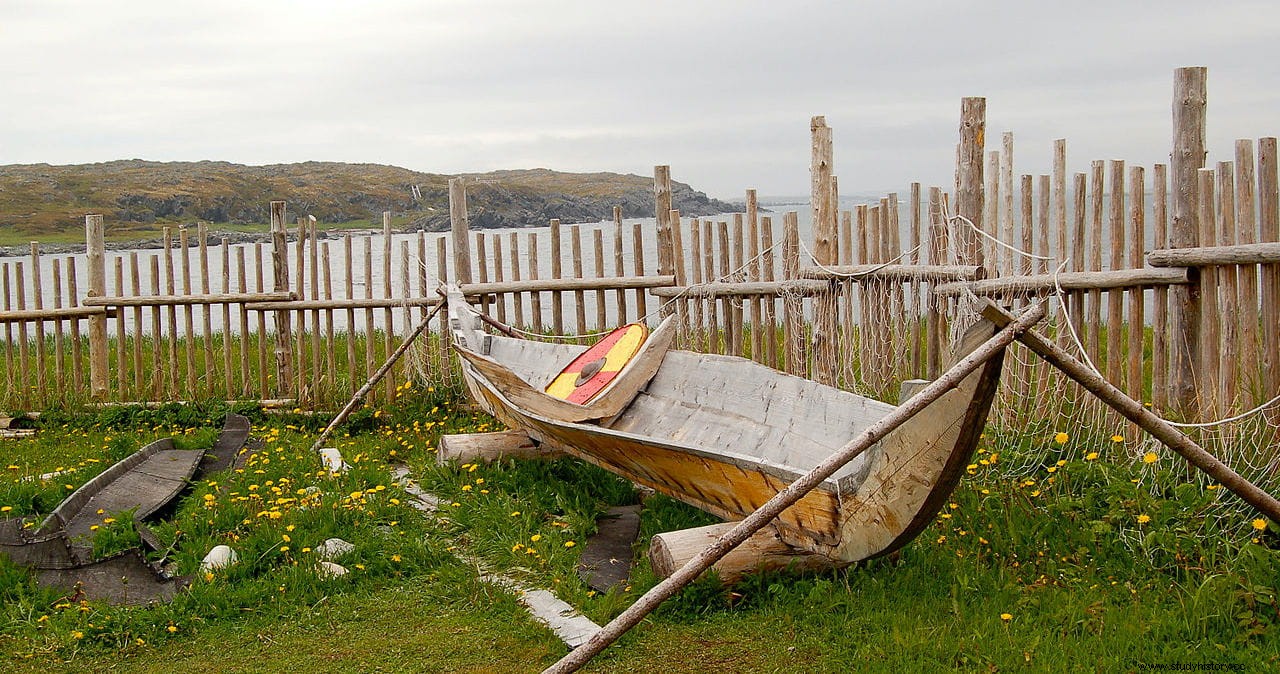The Vikings traveled great distances in their iconic ships. To the west, they established settlements in Iceland, Greenland, and eventually a base at L'Anse aux Meadows, Newfoundland, Canada. However, it is not clear when this first transatlantic activity took place.
In this case, scientists show that Europeans were present on the American continent in 1021 AD, precisely 1,000 years ago. This date also marks the earliest known point at which the Atlantic was crossed, and humanity's migration ultimately encircled the entire planet.
In this study, the woodcutting made by the Vikings at L'Anse aux Meadows was dated to exactly AD 1021. The three pieces of wood studied, from three different trees, came from contexts archaeologically attributable to the Vikings.

Each of them also presented clear evidence of cutting and slicing with metal blades, a material that was not produced by the indigenous population. The exact year could be determined because in the year 992 AD. there was a large solar storm that produced a clear radiocarbon signal in the tree rings the following year.
The increase in radiocarbon production that occurred between 992 and 993 AD. has been detected in tree ring archives around the world , says Associate Professor Michael Dee (University of Groningen), head of the research. Each of the three wooden objects had this signal 29 growth rings (years) before the edge of the bark. Finding the solar storm signal 29 growth rings from the crust allowed us to conclude that the shearing activity took place in AD 1021 , says Dr. Margot Kuitems (University of Groningen), first author of the work.
The number of Viking expeditions to America and the length of their stay over the Atlantic remain unknown. All current evidence suggests that the enterprise was short-lived, and the cultural and ecological legacy of this early European activity in the Americas is likely to have been small. However, botanical evidence from L'Anse aux Meadows has confirmed that Vikings explored lands further south than Newfoundland.

The year 1021 AD It is the oldest in which the European presence in America can be scientifically demonstrated. Earlier dates of Viking presence in America have been largely based on the Icelandic sagas. However, these began as oral histories and were only written down centuries after the events they describe. Although contradictory and sometimes fanciful, the sagas also suggest that encounters, both violent and friendly, took place between the Europeans and the indigenous people of the region.
However, little archaeological evidence has been found to confirm these exchanges. There are also other medieval accounts suggesting that prominent figures on the European continent learned that the Vikings had made landfall across the Atlantic.
